
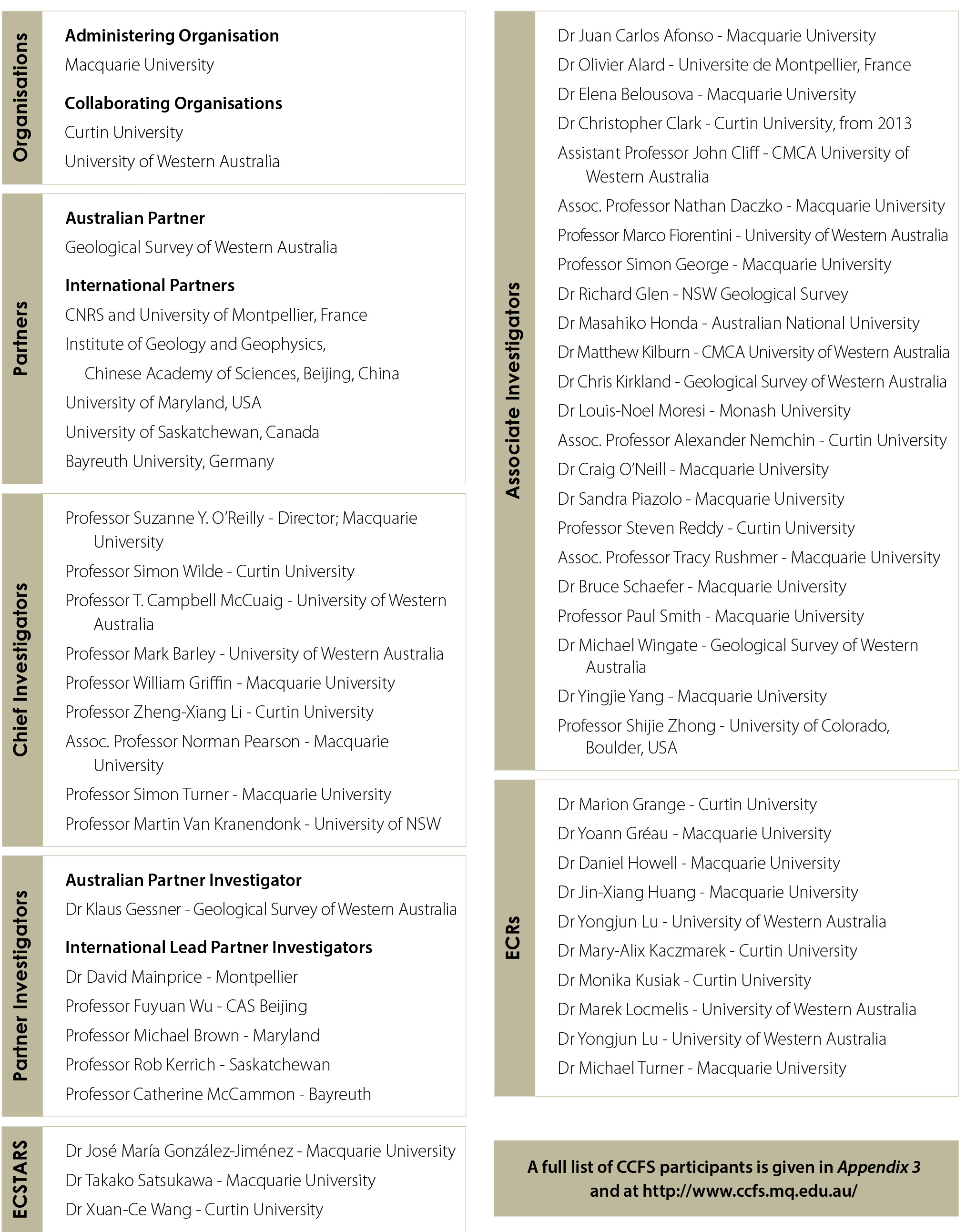
New Staff
Dr Takako Satsukawa - ECSTAR and ECR researcher at CCSF Macquarie - See below and ECSTAR Project report.

Dr Chris Clark received his PhD, on the structural controls on fluid flow in the Curnamona Province of central Australia, from the University of Adelaide in 2006. He then spent 18 months at Adelaide as an ARC postdoctoral research associate investigating the pressure-temperature-time-deformation (P–T–t–d) histories of high-grade metamorphic terranes in Australia, Antarctica and India. He moved to Perth on a five-year Curtin University Research Fellowship in 2007 where he has continued to work on processes in high-grade metamorphic rocks. In 2012 he was awarded a second Curtin University Fellowship and an ARC DECRA (ARC Discovery Early Career Research Award) grant to investigate the conditions under which crustal rocks reach thermally extreme conditions at a regional scale and the implications this has for the strength of mountain belts and the transfer of heat production within the crust.
Primarily a metamorphic geologist, his research involves the integration of techniques and data from the fields of geochemistry, geochronology, structural geology and tectonics. His principal research interests are fluid flow in mid-crustal rocks, particularly with respect to constraining the timing of fluid ingress and potential fluid sources involved in the rehydration of granulite terranes at the grain-to-terrane scale; high-T and ultrahigh-T metamorphism; the P–T–t–d evolution and tectonics of metamorphic belts, and the application of petrology to understanding orogenic evolution; secular change in styles of tectonics and metamorphism. His work is currently focused on high-grade terranes in India and Antarctica with other collaborative research projects underway in Madagascar, Scotland and central Australia. See Research highlight
Dr Leon Bagas - Research Associate Professor (Regional Tectonics, Structural Geology, Stratigraphy, Geochronology, Economic Geology) CET, CCSF UWA - See Research highlight
Dr Laure Martin - Research Associate CMCA, CCSF UWA - See Infrastructure and technology development
CCFS Future Fellows
The application for the CoE CCFS foreshadowed that such a Centre of Excellence would become an attractor for rising stars and research leaders in relevant disciplines and fields of interest. The success of CCFS participants in the Future Fellow rounds emphasises this role of our Centre in recruiting high-flyers at early to mid-career levels. Four Future Fellows, Dr Elena Belousova, Professor Marco Fiorentini, Dr Craig O’Neill, and Dr Sandra Piazolo, have projects relevant to CCFS goals and are profiled in our previous report (http://www.ccfs.mq.edu.au/AnnualReport/11Report/Participants.html). Two new Fellowships were awarded in 2012.
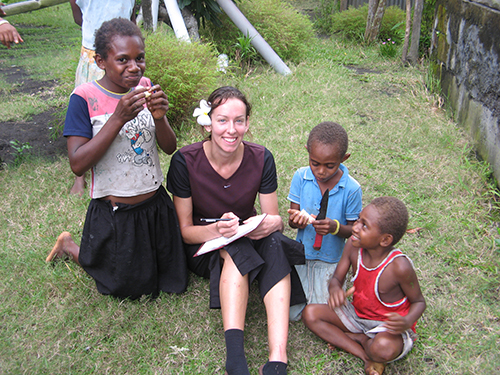 Dr Heather Handley completed her BSc (Hons I) at Edinburgh University in 2001 and then completed a PhD on the petrogenesis of Indonesian volcanoes at Durham University. She was awarded an Ogden Trust Teaching Fellowship in 2005 to work for a year with high school students and their teachers to raise the scientific awareness and aspirations of pupils. She continues to strive to enthuse high school students through science outreach activities at Macquarie University.
Dr Heather Handley completed her BSc (Hons I) at Edinburgh University in 2001 and then completed a PhD on the petrogenesis of Indonesian volcanoes at Durham University. She was awarded an Ogden Trust Teaching Fellowship in 2005 to work for a year with high school students and their teachers to raise the scientific awareness and aspirations of pupils. She continues to strive to enthuse high school students through science outreach activities at Macquarie University.
In 2012 she was invited to bring the excitement and importance of her research area into public view as an invited scientist in the filming of a documentary on Krakatau Volcano for The Discovery Science Channel. During her PhD she became aware of the importance of Uranium-series (U-series) isotope research, which can uniquely place timescale constraints on a wide range of young geological processes. In 2007 she started as a Post-doctoral Research Associate with Professor Simon Turner in the GEMOC Key Centre at Macquarie University, one of the few laboratories with this capability, and focused on the timescales of young volcanic processes. Heather mastered and helped to further develop and improve methods for U-series isotopic analyses of volcanic rocks, applied to island arc and intra-plate volcanic settings. Heather was awarded a Humboldt Foundation Research Fellowship at LMU in Munich, Germany in 2008 to conduct experiments on magma mixing and contamination. She then returned to Macquarie University in 2009 as a Post-doctoral Research Associate (on an ARC Linkage grant) to work on new, exciting applications of U-series isotopes to constrain sediment weathering and residence timescales.
Heather’s Future Fellowship entitled “The timescales of Earth-system processes: extending the frontiers of uranium-series research” will capitalise on the recent exposure of a unique volcanic stratigraphy at Merapi Volcano in Indonesia to:
1) advance our understanding of short-lived isotope disequilibria in volcanic rocks and 2) test and develop the U-series comminution method for dating continental sediments and soils (lying between independently datable volcanic deposits). This research will elucidate the driving forces behind geologically rapid transitions in the eruptive behaviour of volcanoes (effusive to explosive) and, via the development of new methodologies, will permit more accurate dating of Quaternary soils and sediments. The outcomes will benefit volcanic hazard mitigation policy and provide crucial knowledge on the rates of the effects of climate change in the landscape. This project is part of CCFS Theme 3, Earth Today, and contributes to understanding Fluid Fluxes in the Earth.
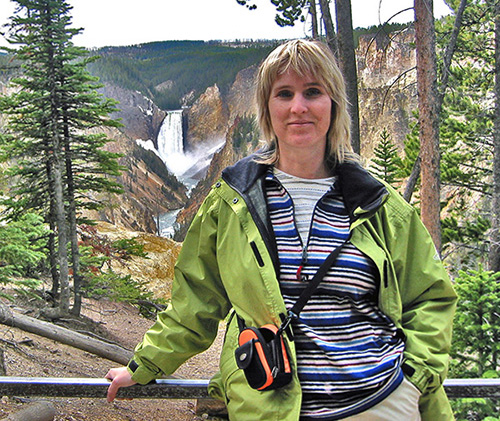 Dr Dorrit Jacob studied mineralogy and geology at the University of Mainz after working at the Max Planck-Institute for Chemistry as a chemical laboratory assistant. She received her Diploma in 1991 and her PhD at the University of Goettingen in 1995 for work on the geochemistry and radiogenic isotopes of mantle eclogites. Following a spell at the University of Greifswald, she moved to Mainz and switched to the new field of biomineralisation from 2006 onwards, building up a research group in the Geocycles Research Centre. This was recently recognised by the award of a nationally funded Heisenberg Chair in Biomineralisation, which she took up at the University of Mainz in 2012. She leaves this full professorship to take up the Future Fellowship at the CCFS in 2013. Dorrit has twice set up laboratories for Laser-ICP-MS, in Greifswald and Mainz, and maintains an interest in diamond formation and the geochemistry of the lithosphere in addition to biomineralisation.
Dr Dorrit Jacob studied mineralogy and geology at the University of Mainz after working at the Max Planck-Institute for Chemistry as a chemical laboratory assistant. She received her Diploma in 1991 and her PhD at the University of Goettingen in 1995 for work on the geochemistry and radiogenic isotopes of mantle eclogites. Following a spell at the University of Greifswald, she moved to Mainz and switched to the new field of biomineralisation from 2006 onwards, building up a research group in the Geocycles Research Centre. This was recently recognised by the award of a nationally funded Heisenberg Chair in Biomineralisation, which she took up at the University of Mainz in 2012. She leaves this full professorship to take up the Future Fellowship at the CCFS in 2013. Dorrit has twice set up laboratories for Laser-ICP-MS, in Greifswald and Mainz, and maintains an interest in diamond formation and the geochemistry of the lithosphere in addition to biomineralisation.
In her Future Fellowship project, she will study the geochemistry and mineralogy of the skeletons of marine organisms as a means to characterise their growth environment. This research will enable the effects of physiological processes on the composition of biominerals to be characterised, thus unlocking the door to palaeoclimate information that can be won from this skeletal material. The project uses a multi-technique approach, combining innovative cutting-edge in-situ analytical methods with culture-growth experiments and field studies. Robust links between environmental conditions and biomineral nanostructure will provide new tools for the analysis of palaeoclimate and the monitoring of past environmental change.
Early Career Researchers (ECR)
The second primary goal of CCFS (see above) concerns the recruitment, development and mentoring of Early Career Research (ECR) staff “for the development of the next generation of Australia’s geoscientists”.
A Government White Paper in 2010“Meeting Australia’s research workforce needs” stated that “There is a looming gap in the pool of potential leaders in geoscience research and training in Australia; the current crop of leaders is a senior generation, and there are few in the demographic down to people now in their 30s or younger. We need to bring some of this younger group along rapidly, and begin generating a new pool of potential leaders, to avoid a collapse in a research field that is essential to national wealth creation.”
As part of the solution to this problem, the CCFS proposal specifically targeted funding toward several outstanding ECRs newly employed at the partner institutions. It also foreshadowed that “the employment of… Centre-funded postdoctoral fellows will bring in young people with targeted expertise and potential, and develop them into the next generation of leaders in research and training.”
The initial awarded funding framework of CCFS resulted in a revision of the ECR recruitment capacity. However, the ARC provided an opportunity to apply for additional post-award funding dedicated to ECRs. The success of that application allowed CCFS to enhance the ECR training capability. It also represents a strategic intention to further expand
The post-award funding allowed the recruitment of four postdoctoral fellows on terms analogous to the DECRA grants (ARC Discovery Early Career Researcher Award). These positions within CCFS have been named “ECSTAR”: Early Career Start-up Awards for Research. Three have commenced research in CCFS and one position is under selection.
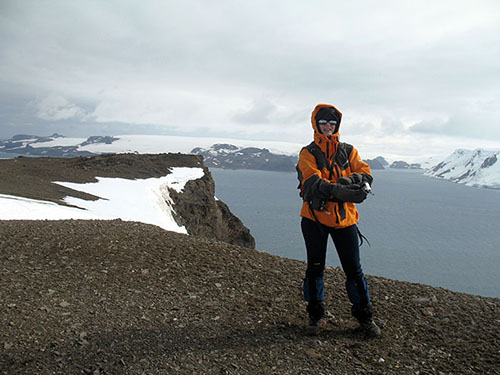 The following profiles present 2012 ECRs (including the three appointed ECSTARs in CCFS) and summarise their expertise and research areas.
The following profiles present 2012 ECRs (including the three appointed ECSTARs in CCFS) and summarise their expertise and research areas.
New
Dr Monika A. Kusiak came to Curtin University (Perth) as a Marie Curie Fellow in 2011, following a G08 fellowship at UWA. Monika completed her doctoral thesis in geochronology at the Polish Academy of Science, working mostly on the Bohemian Massif. Monika’s research interests focus on the U-Th-Pb geochronology of monazite, zircon and xenotime, including provenance studies, accessory mineral behaviour in evolving magmatic systems, and resetting of isotope systematics by metamorphic, hydrothermal and diagenetic activity. At Curtin, Monika is conducting a worldwide search for traces of early Earth history preserved in zircon, in localities as widespread as Antarctica, India and Greenland. She is also investigating how such records are disturbed by high-temperature metamorphic events, using ion-beam imaging and other advanced microanalytical technologies. Such techniques have revealed disturbance of isotopic systems by element mobilisation within zircon on a sub-micron scale. This work is part of Theme1, Early Earth. See Research highlight.
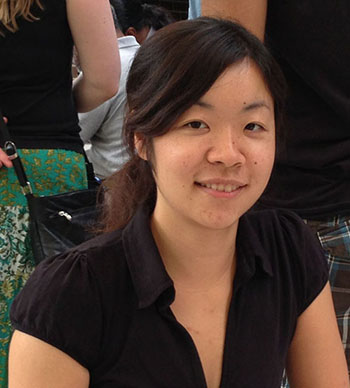 Dr Takako Satsukawa joined CCFS/GEMOC in October 2012 as an ECSTAR (Early-Career Startup Award Researcher) funded by an ARC Centre special grant to CCFS for early-career researchers. She completed her PhD jointly at Shizuoka University (Japan) and the Université Montpellier (France). Her dissertation research focused on microstructural and petrological characteristics of mantle-derived peridotite xenoliths in basaltic rocks and their implications for the evolution and seismic anisotropy of the uppermost mantle beneath the back-arc region. She mastered the application of Electron Backscatter Diffraction (EBSD) technology to measure the crystallographic preferred orientations (CPO) of individual grains of minerals. Her current research interests include the rheology of the uppermost mantle and the history of the roots of ancient continents to provide new constraints on the rheological properties of the lithospheric mantle.
Dr Takako Satsukawa joined CCFS/GEMOC in October 2012 as an ECSTAR (Early-Career Startup Award Researcher) funded by an ARC Centre special grant to CCFS for early-career researchers. She completed her PhD jointly at Shizuoka University (Japan) and the Université Montpellier (France). Her dissertation research focused on microstructural and petrological characteristics of mantle-derived peridotite xenoliths in basaltic rocks and their implications for the evolution and seismic anisotropy of the uppermost mantle beneath the back-arc region. She mastered the application of Electron Backscatter Diffraction (EBSD) technology to measure the crystallographic preferred orientations (CPO) of individual grains of minerals. Her current research interests include the rheology of the uppermost mantle and the history of the roots of ancient continents to provide new constraints on the rheological properties of the lithospheric mantle.
“My other interests focus on the discovery of Australian culture! I am pleased to have the opportunity to explore this exciting new research at CCFS/GEMOC.”
Her research interests lie in developing a systematic approach to mapping the behaviour of melts and fluids in the upper mantle. Takako approaches this by combining microstructural analysis, analysis of water contents, numerical modelling of the seismic properties of individual samples, and geochemical analyses of xenoliths from different lithospheric levels which have experienced different degrees of melt-rock interaction. Since previous work by GEMOC has used geochemical analysis, a new methodology for mapping ‘hidden’ microstructures can be developed by combining these approaches. As this project has just commenced, the characterisation of the microstructural evolution of mantle-derived rocks from the cratonic lithosphere has started to explore the CPO mapping of statistically representative sample sets from key mantle domains representing specific tectonic histories, and which are already geochemically well characterised. This project is part
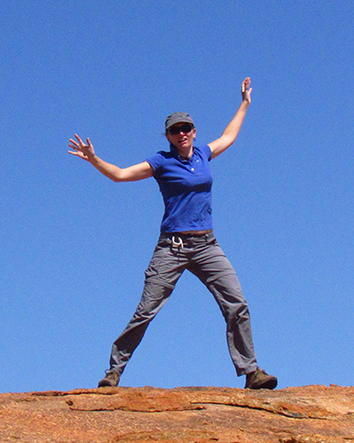
Continuing
Dr Marion Grange has been employed by Curtin University since March 2008, and joined the CCFS in 2011. Marion is interested in providing better timing constraints on the early stages of differentiation and the early meteoritic impact history of Earth and Moon by studying isotopic systems of ancient materials from both planetary bodies. Her recent work showed that careful textural characterisation of zircon and apatite in lunar impact melt breccias is necessary to properly interpret
in-situ geochronological data of these complex grains. During 2012 her work concentrated on magmatic and alteration minerals in Martian meteorites. She has worked on characterising carbonates from Mars and obtained stable isotopes on these minerals. She has also identified several phosphate grains in other Martian samples, that will be used for U-Pb geochronology.
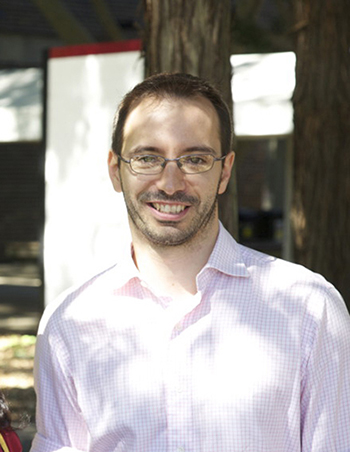
Dr Yoann Gréau joined GEMOC in 2007 as a PhD candidate (graduated 2011) after obtaining an MSc from the University of Montpellier II (France), where he trained in ultramafic petrology and geochemistry, studying ultra-refractory abyssal peridotites. During his PhD studies, he investigated the origin and history of eclogite xenoliths brought up from the lithosphere-asthenosphere boundary by kimberlitic magmas. His research focused on the petrology and geochemistry of the sulfide phases, looking at siderophile and chalcophile elements (e.g. Cu, Ni, Se, Te, PGEs and S isotopes). He also investigated the relationships between microstructures and mineral geochemistry (e.g. REE, HFSE, LILE and O isotopes) of the main silicate phases, demonstrating strong links between mantle eclogites and metasomatic processes occurring within the sub-continental lithospheric mantle.
In 2012 Yoann co-managed the TerraneChron® team in CCFS. TerraneChron® uses a specifically developed methodology to study the evolution of the continental crust through time by using integrated in-situ analysis of zircons for U-Pb ages and O- and Hf-isotope composition. The methodology, developed at Macquarie University, has had great success with our industrial and geological survey partners; it provides the partners with information useful in their mapping and exploration programs, and gives the team valuable data for large-scale research. In 2012, TerraneChron® imaged and analysed 3463 grains of zircons for a total of 23 different projects from different regions of 4 continents.

Dr Dan Howell is a postdoctoral research associate in CCFS working on the structure and origin of diamonds, a unique recorder of mantle fluid activity. By studying fluid and mineral inclusions trapped within them, this robust capsule mineral can provide direct samples from the depths of the Earth. Publications in 2012 utilised the infrared-mapping data-processing technique that he developed with Craig O’Neill (CCFS publication #168); he is now focusing on trace element distributions and abundances, especially understanding their partitioning in mixed-habit diamonds. He has been investigating the causes of pink colour in naturally deformed diamonds using the electron backscatter diffraction facility now operational within CCFS (Macquarie University node). See Research highlight.
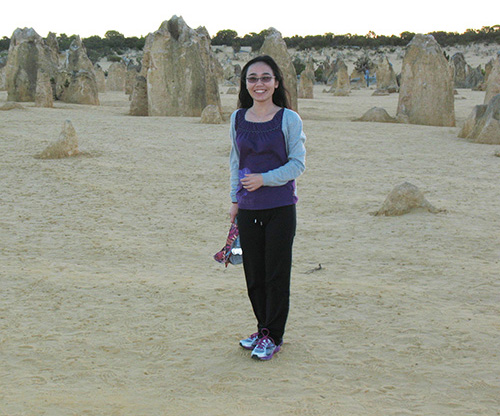
Dr Jin-Xiang Huang completed her undergraduate study at China University of Geosciences, Beijing, and was one of the top students in her class. She received her PhD at GEMOC (December 2011) with a study of the metasomatism and origins of xenolithic eclogites from the Roberts Victor kimberlite, South Africa. This gave her extensive experience in the clean labs and on state-of-art instruments to get precise geochemical data; and in integrating a wide range of information into one model. She discovered that mantle metasomatism has completely changed the petrography and chemical and isotopic compositions of most eclogites. The evidence from these thus cannot be used to support the popular idea that they represent subducted oceanic crust. Information from primary eclogites favours their origin from deep-seated magmas.
After her PhD, she joined CCFS as a post-doctoral research associate, to work on the Mg and Oxygen isotopes of mantle rocks (both eclogites and peridotites) and in different mantle processes (e.g. magma crystallisation, mantle metasomatism). This will provide a better understanding of mantle processes and further constraints on geodynamics.
In 2012, she developed high-Cr garnet standards for in-situ O-isotope analysis by ion probe. Combined with the low-Cr standards, garnets of any composition can now be measured; the fine-scale homogeneity/heterogeneity of δ18O can be mapped and used as one important piece of information for understanding geological processes. See Research highlight
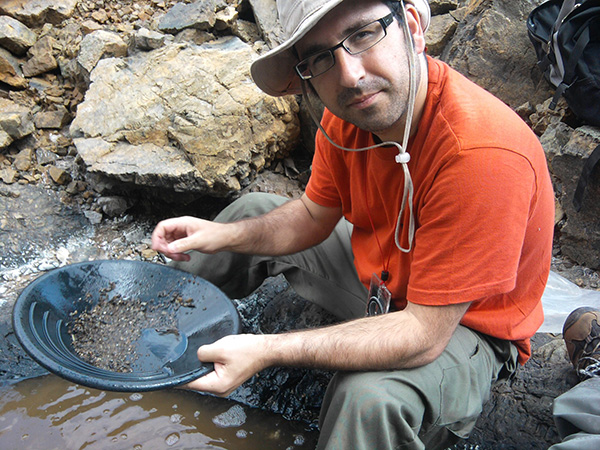
Dr José María González-Jiménez is a geologist/mineralogist specialising in the mineralogy and geochemistry of the Platinum-Group Elements (PGE), especially in ore deposits associated with mafic/ultramafic rocks. He received his PhD from the University of Granada (Spain) in 2009, having investigated the mechanisms of concentration and remobilisation of PGE in ore deposits from ophiolite complexes in Cuba, Bulgaria and New Caledonia. His research is focused on the mineralogy and geochemistry of the PGEs, to find out how these noble metals are concentrated into economic deposits in Earth’s upper mantle and how they are re-mobilised during post-magmatic events. His work as a Research Fellow at CCFS has taken several new directions. One is the application of Re-Os isotopic systematics to the Platinum-Group Minerals (PGM), using in-situ microanalysis by LA-ICPMS; another is based on the analysis of trace-element patterns in chromite from different styles of magmatic deposits. Combining mineralogical, petrologic, geochemical, isotopic and thermodynamic approaches, he is modelling the mechanism(s) of magmatic concentration of the Platinum Group Metals and chromium. This work is providing an improved explanation for the genesis and tectonic setting of PGE-bearing chromite deposits. Another relevant aspect of his work at CCFS is a statistical study of the size distribution of the PGM in different microstructural settings and the characterisation of their Os-isotope composition. This has led to the discovery that the PGE can be re-mobilised/re-concentrated by the hydrothermal/metasomatic fluids that commonly affect lithospheric mantle rocks. This process also affects the Os-isotope signatures of Os-rich minerals, in contrast to accepted ideas about the stability of the Re-Os isotopic system in the mantle. See Research highlight
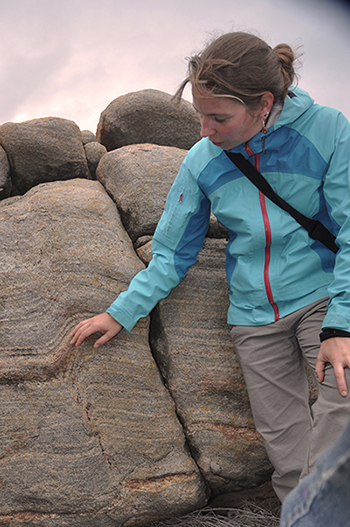
Dr Mary-Alix Kaczmarek joined CCFS in mid 2011 as a postdoctoral research fellow. She graduated with a PhD from the University of Neuchâtel (Switzerland) in 2007, with a thesis focused on upper-mantle shear zones. After her PhD, she took a postdoctoral CNRS position at Géosciences Montpellier (France), working on the microstructures and geochemistry of mantle xenoliths from southeastern Algeria. She then moved to Curtin University (Perth) in 2010, and joined the CCFS in 2011. The principal objectives of her work are to explore the relationships between deformation mechanisms and reactive fluid/melt transport. These factors have implications for the initiation of shearing and on the underlying controls this has on the way tectonic plates deform. To study these processes she applies state-of-the-art micro-analytical techniques such as EBSD and LA-ICPMS to investigate the role that fluid/melt and mineral chemistry plays in the mechanical stability of the rock. During 2012, her research has concentrated on peridotites from rifting and ocean-continent transition environments (CCFS Project 2b), and Martian meteorites (CCFS Project 7). She investigates the peridotites to constrain the interaction between deformation and fluid flow, with a special interest in the interaction between intragrain and intergrain deformation processes and chemical reactions associated with hydration of the mantle. The aim of the Martian study is to characterise the fluids and their interaction with minerals,and to obtain information on primitive mantle deformation mechanisms and processes. See Research highlight.
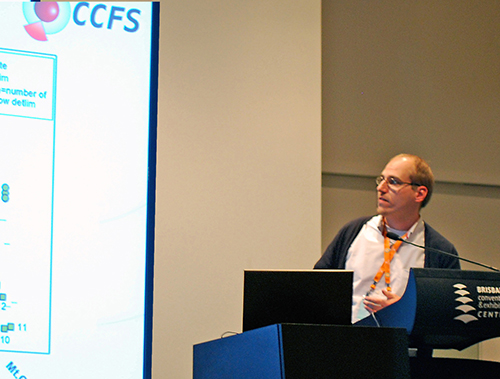
Dr Marek Locmelis joined the CCFS in 2011 as part of CET’s research team on Magmatic Mineral Systems, to unravel the mysteries associated with the formation of nickel-sulfide ore systems in the deep lithosphere and metal and fluid transport processes in the Earth’s mantle. In 2012, Marek undertook fieldwork in the Ivrea-Verbano Zone in Italy, one of the few localities in the world where magmatic Ni-Cu-(PGE) sulfide deposits are hosted by rocks from the deep lithosphere that have been uplifted to the surface. New geochemical data demonstrate a strong relationship between mantle metasomatism and sulfide-associated mineralisation, making the Ivrea-Verbano Zone an excellent natural laboratory to investigate metal sources and transport mechanisms in the deep Earth (see Research highlight and Appendix 1 ). The work on the Ivrea-Verbano Zone is integrated with a series of hydrous high-pressure and high-temperature experiments to investigate the capacity of near-solidus melts and fluids to transport metals at lithospheric mantle-asthenospheric conditions.
Marek presented his work at the International Geological Congress 2012 in Brisbane and at the American Geophysical Union’s Fall meeting 2012 in San Francisco.
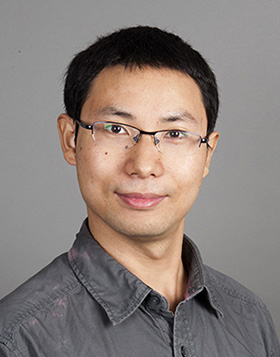
Dr Yongjun Lu is a Research Associate working on the CCFS foundation project “4D lithospheric evolution and controls on mineral system distribution: The Western Superior-Yilgarn comparison”. In 2012, in addition to ongoing zircon multi-isotopic analysis, Yongjun established a sound collaboration with Lakehead University and the Ontario Geological Survey to carry out a successful field season in Ontario. Yongjun also helped attract a new PhD student, Katarina Bjorkman, to join this project. To establish and maintain the leadership of CCFS in the field of 4D lithospheric mapping, Yongjun has initiated, with Professor Zengqian Hou, the zircon Hf-isotope mapping of Tibet. This is the first time this technique has been applied in a Cenozoic collisional orogen. This project has already led to exciting discoveries. Another collaborative project on “Genesis of fertile hydrous adakitic melts in orogenic porphyry Cu system” has been initiated and led by Yongjun in 2012 in order to address one of CCFS’s themes of understanding fluids in the crust and mantle. This project is part of CCFS Theme 2, Earth Evolution, and contributes to understanding Earth’s Architecture and Fluid Fluxes. See Research highlight.

Dr Michael Turner joined CCFS at Macquarie in 2011 as part of a three-year Post-Doctoral Fellowship from the New Zealand Foundation of Science and Technology. In 2012 he used short-lived U-series isotopes to determine the timescales of magma degassing events. His research supplements the isotopic research by in-situ analysis of water in pyroxene phenocrysts. Pyroxenes crystallise over a large range of magmatic temperatures and pressures, and have the potential to record water contents of their host magmas during differentiation. The results are helping to understand the driving forces behind explosive volcanic eruptions.
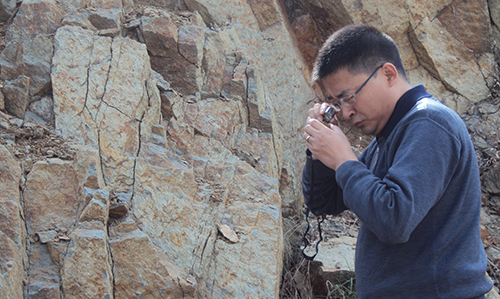
Dr Xuan-Ce Wang joined CCFS in 2011 as a postdoctoral research fellow at Curtin University. His primary role in CCFS is to examine possible linkages between plate tectonics and mantle plume dynamics, to test the effects of deep water cycling on the thermal evolution of the Earth’s mantle, and to identify evidence for plume-related magmatism in Australia and other continents. In 2012, he acquired high-precision Pb, Sr, Nd, and Os isotope data for the Hainan flood basalts. Synchronous basalts from the South China Sea and adjacent areas share the same Pb, Nd, Sr, and Pb isotopic compositions, implying that the generation of these basalts probably involved a plume that originated in the lower mantle. The study, along with previously published data, confirms the coexistence of an ancient (4.5-4.4 Ga) mantle reservoir and the involvement of young (0.5-0.2 Ga) recycled
materials in the source region of the late Cenozoic Hainan plume. The work also provides the first observational support for dynamic linkages between deep subduction and mantle plume generation. This project is part of CCFS Theme 2, Earth Evolution, and contributes to understanding Earth’s Architecture and Fluid Fluxes. See Research highlight.

 ARC Centre of Excellence for Core to Crust Fluid Systems
ARC Centre of Excellence for Core to Crust Fluid Systems